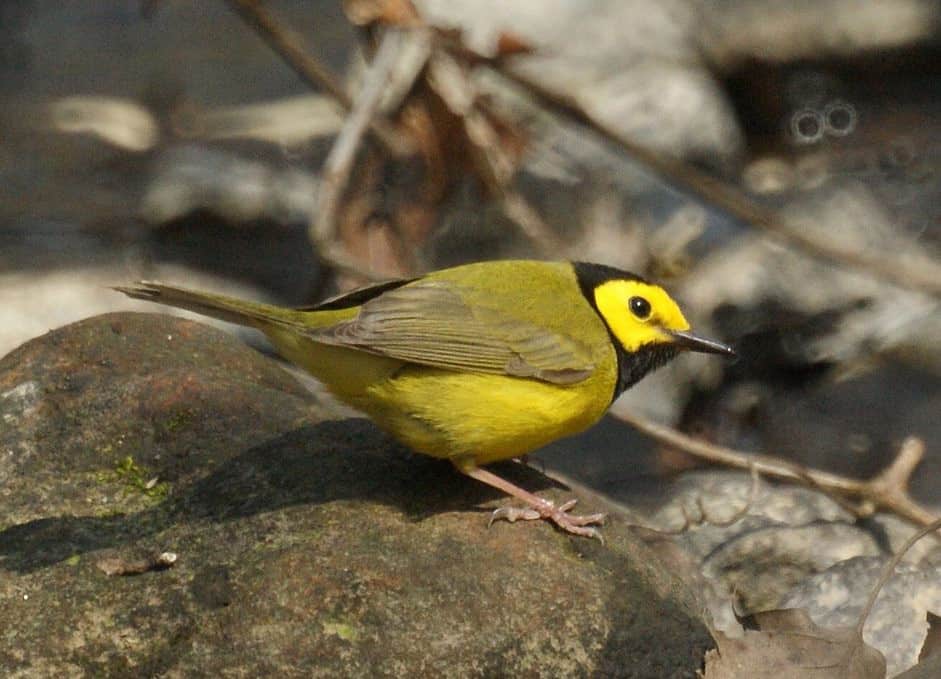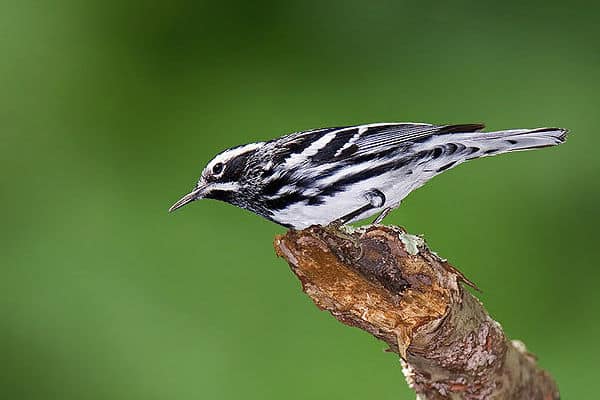Its species name citrina means “lemon colored,” and no North American bird is more rich in yellow than a male hooded warbler. Like many wood warblers, flycatchers, vireos, and other neotropical migrants, the hooded warbler spends half or more of its year in the tropics, returning to eastern North America to breed.
Yellow, black, and white are the hooded warbler’s signature colors. All are bright yellow below, have blackish lores (areas between the eyes and bills), and large black eyes. Males have distinctive black hoods running around their yellow cheeks, from crown to throat. Females have variable versions of black or blackish hoods, while immatures have yellow heads with olive on their crowns. Hooded warblers flick their tails to flash their white, outer tail feathers—another identification clue.
Listen for
You may hear the sweet, rich weeta-weeta-wiTEEoh of the dazzling hooded warbler.
Find it
If you want to see a tropical bird without visiting the tropics, head out to a lush forest or swamp with dense undergrowth. Hooded warblers are common in many parts of the Southeast, both in lowland areas, such as cypress swamps, and in hilly deciduous forests. In some areas, they also nest in pine woods. One of the most important habitat requirements is dense undergrowth, with bushes that provide cover for these low-feeding, low-nesting birds. In late summer, hooded warblers migrate south to winter in southern Mexico and Central America.
Feed it
Much of a hooded warbler’s feeding time is spent low in the bushes, picking caterpillars, spiders, moths, beetles, flies, and other invertebrates from the leaves. These very active birds dart out to grab prey in flight, briefly hover to grab insects off leaves, or move through the branches, grabbing food as they go.
Nesting Behavior
Hooded warblers usually nest in shrubs between 2 and 6 feet above the ground. There, the female usually constructs a cup nest of dead leaves, bark, grass, and plant fluff. Dead leaves decorate the outside of the nest, camouflaging it—although cowbirds often find hooded warbler nests and lay their eggs there.
Snakes and other predators take many of the young as well. The female hooded warbler lays four eggs, which she incubates for about 12 days. Both parents feed the young, which can fly about 10 days after hatching.




